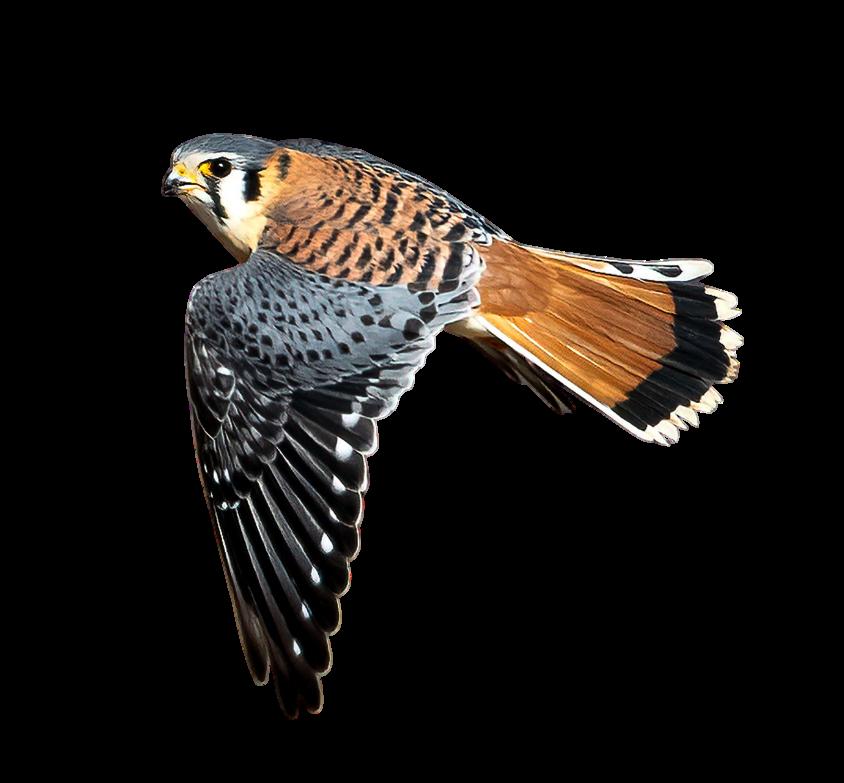
1 minute read
Project Update
by kepo-mck
American Kestrel Nest Boxes
by Cole Delisle, Environmental Projects Coordinator - Terrestrial Habitats
In October KEPO installed 6 kestrel nesting boxes throughout the community to provide more habitat for the species. Kestrels are cavity nesters and will occupy woodpecker holes, rock crevices, or tree hollows. Since they don’t excavate their own nests, they take to nest boxes easily. A great nesting site is by a large open field area where they can hunt for rodents and insects. Kestrels start nesting in early-Spring and the chicks fledge roughly 2-3 months later
They are the second smallest falcon in the world.
Kestrels will hide surplus kills in grass clumps, tree roots, bushes and cavities to save for later or hide from thieves
As a smaller bird of prey, kestrels often end up as prey for larger hawks and owls.
The oldest American Kestrel was a male and at least 14 years, 8 months old when he was found in Utah in 2001.









